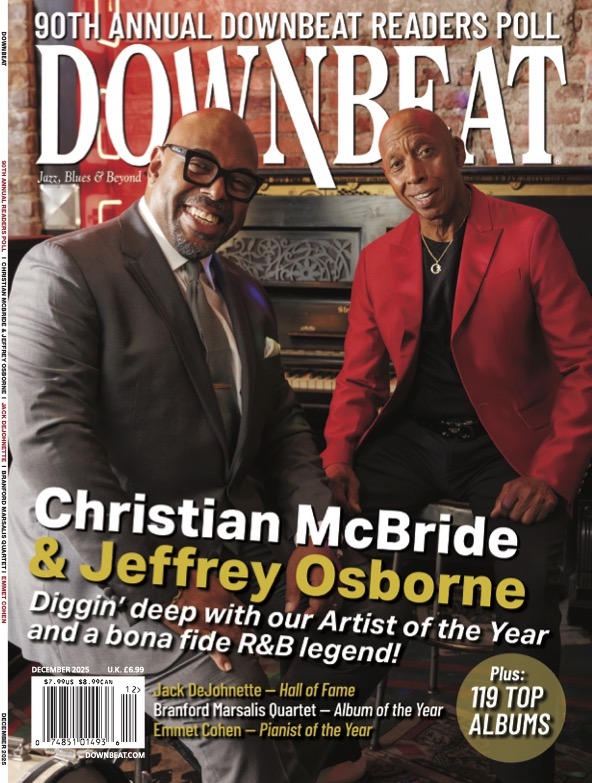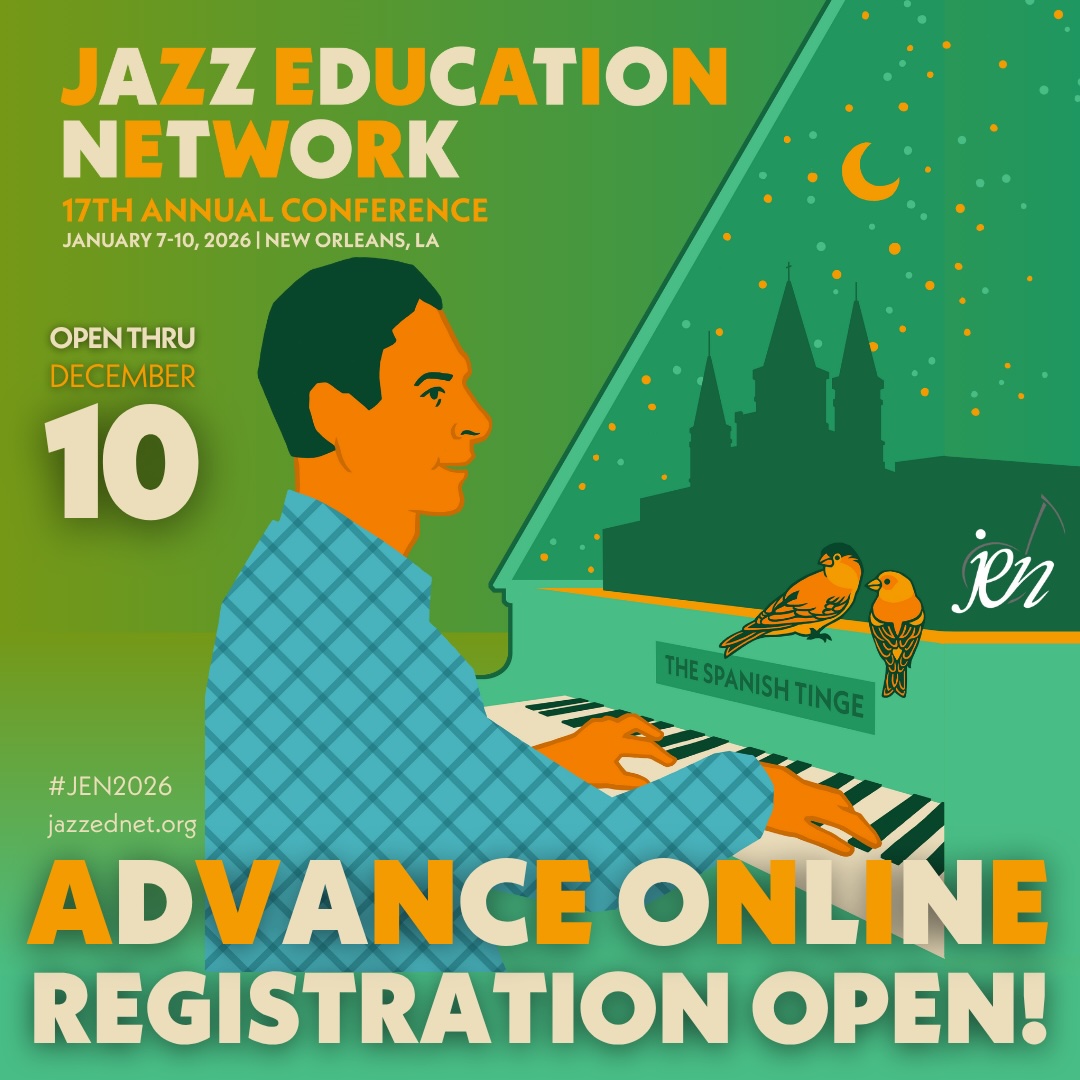Oct 28, 2025 10:47 AM
In Memoriam: Jack DeJohnette, 1942–2025
Jack DeJohnette, a bold and resourceful drummer and NEA Jazz Master who forged a unique vocabulary on the kit over his…
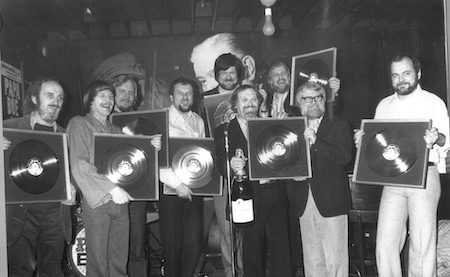
Karl Emil Knudsen, second from left, with members of Papa Bue’s Viking Jazz Band, which recorded Storyville’s first million-selling record.
(Photo: Courtesy Storyville Records)The oldest and largest independent jazz record label in Europe is currently celebrating its 70th anniversary, and chances are you may never have heard of it. But obscurity is part of the underground charm of any specialty label devoted to jazz — a credential of its authentic outlaw character standing against the tides of commercialism. In that spirit, Storyville Records was founded in Copenhagen, Denmark, in 1952 by a young jazz fan named Karl Emil Knudsen, whose passion for the music was surpassed only by his entrepreneurial ambitions.
“Today we have between 600 and 700 items available digitally,” said Mona Granager, Storyville’s general manager. “About 400 are still in CD stock. We even have some of the more iconic issues on vinyl as well as recent issues from Michel Petrucciani and Clark Terry. Distribution is principally digital, but we have physical distribution through ArkivMusic [Naxos of America] and other another partners in Europe and Japan.”
Storyville wasn’t always so global. After World War II, Denmark had much to catch up on. Audiences were emotionally loyal to America’s New Orleans legends. And Europe’s most influential jazz pundit was Hughes Panassie, an arch traditionalist who believed that the real McCoy could only be found on records made before 1930. He cautioned young fans not to be fooled by the lure of virtuosity. “In music, primitive man generally has greater talent than civilized man,” he argued. He explained all this at length in The Real Jazz, one of the earliest books on jazz to appear in Europe — and dangerously myopic in its nostalgia. Among contemporary musicians, Benny Goodman was “detestable,” Lester Young “ugly” and Charlie Christian unmentioned. Its publication in 1942 came as Knudsen reached an impressionable adolescence. He, and others, would be deeply influenced by Panassie, who helped keep traditional jazz thriving in Europe well after it became passé in the U.S.
By the early 1950s Knudsen was part of a small group of serious Danish collectors who would meet to revel in old Paramount and Gennett masters, then selectively reissue them in Western Europe. Knudsen decided there were opportunities in the post-war Danish jazz scene, first among them a record label dedicated to the music’s fundamentals. And what better name to characterize its mission than Storyville, the mythic New Orleans cradle of the first jazz. Its first 78 rpm, issued near the end of 1952, was a 1924 Gennett by Louis Armstrong and the Red Onion Babies. Storyville was off to the races.
Knudsen was also eager to record new music for the growing New Orleans revival market, which was the rage everywhere, especially England. He became partner in a Copenhagen jazz club called Basin Street (another New Orleans reference), which presented Danish artists, but, more importantly, brought in musicians to record for Storyville. Among the first Knudsen recorded in 1953 was English trombonist Chris Barber, who would provide Storyville with its first money-maker. “Ice Cream,” recorded in 1954 in Knudsen’s home, it would sell more than 250,000 copies.
In 1956, Storyville signed Papa Bue’s Viking Jazz Band, which swept onto the European charts with the label’s first million-seller. “That was the start of it, really,” said Granager. “With that, we became a company.” Storyville gathered a procession of American blues and jazz giants: Champion Jack DuPree, George Lewis, Sidney Bechet, Edmond Hall and Albert Nicholas, most bearing the made-in-New Orleans sound, past and present.
Over its first 15 years, the Storyville catalog grew into the hundreds, branching into contemporary jazz by the mid-1960s. “We had a lot of Americans coming to Copenhagen then,” said Granager, “so we would record Lee Konitz, Stan Getz and others, typically with Danish musicians.” Much was newly recorded or licensed. More was archival concerts, radio broadcasts and studio outtakes — previously the cloak-and-dagger domain of furtive collectors.
By the ’60s, many small specialty labels treated such material as public domain and developed a bootleg empire. They rescued thousands of treasures, but provided no payments to musicians. It created an ethical controversy.
Knudsen made it Storyville’s policy never to issue a broadcast or concert without first locating the musicians (or their estates) and arranging appropriate payments. He acquired a reputation for fairness and integrity unique in the industry.
Knudsen made agreements with the Duke Ellington estate that conferred fidelity and legitimacy on the famous 1940 Fargo concert, as well as the complete Ellington Treasury broadcast series from 1945. Similar arrangements brought volumes of wartime Jubilee programs, as well as the Eddie Condon Town Hall Concerts of the mid-’40s and other gems.
Knudsen died in September 2003 at 74. “There was a really unsteady period for Storyville after that,” Granager said, “until we were acquired two years later by what is now the Wise Music Group, a family of international music publishing companies.”
Today, Storyville is very different from its stomping Dixie days. “We still sell a little of that,” Granager said, “but it’s become old-fashioned to most people in Europe.” So is the CD. Granager is not optimistic about its future, though new releases from Storyville still come out as physical product. “But the digital market is growing,” she said, “and that is the future we’re adapting to.” More important, she adds, Storyville is still “basically jazz.”
Storyville is often referred to as the European Blue Note, a comparison that may understate its scope. Like Blue Note, it began in traditional jazz and moved forward. But unlike Blue Note, Storyville moved in so many directions and in such depth that today, at 70, it offers perhaps the largest global menu of jazz artists and styles anywhere. The label’s catalog is available online at storyvillerecords.com. DB
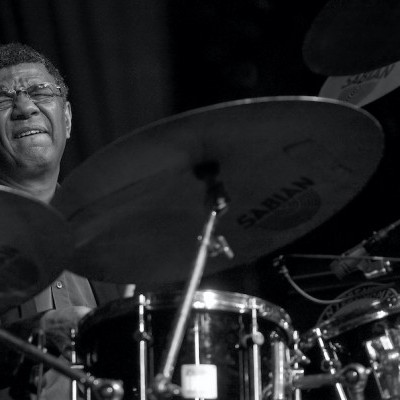
Jack DeJohnette boasted a musical resume that was as long as it was fearsome.
Oct 28, 2025 10:47 AM
Jack DeJohnette, a bold and resourceful drummer and NEA Jazz Master who forged a unique vocabulary on the kit over his…
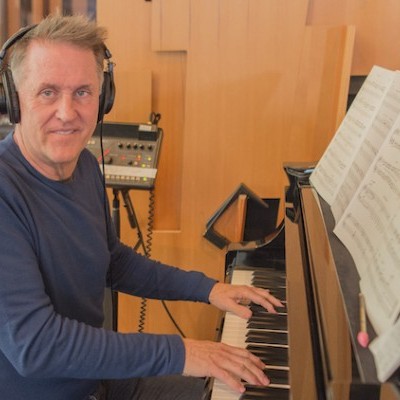
Goodwin was one of the most acclaimed, successful and influential jazz musicians of his generation.
Dec 9, 2025 12:28 PM
Gordon Goodwin, an award-winning saxophonist, pianist, bandleader, composer and arranger, died Dec. 8 in Los Angeles.…
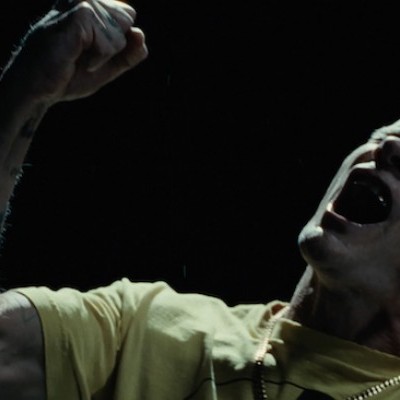
Flea has returned to his first instrument — the trumpet — and assembled a dream band of jazz musicians to record a new album.
Dec 2, 2025 2:01 AM
After a nearly five-decade career as one of his generation’s defining rock bassists, Flea has returned to his first…
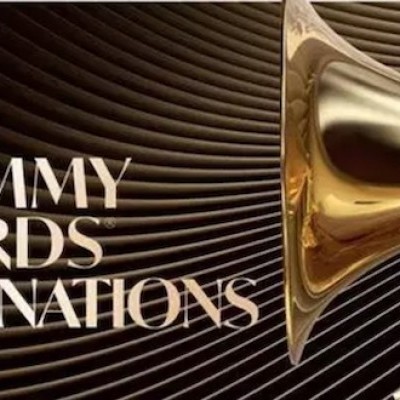
To see the complete list of nominations for the 2026 Grammy Awards, go to grammy.com.
Nov 11, 2025 12:35 PM
The nominations for the 2026 Grammy Awards are in, with plenty to smile about for the worlds of jazz, blues and beyond.…
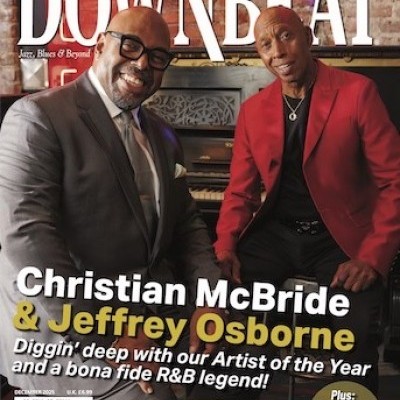
Nov 13, 2025 10:00 AM
For results of DownBeat’s 90th Annual Readers Poll, complete with feature articles from our December 2025 issue,…

